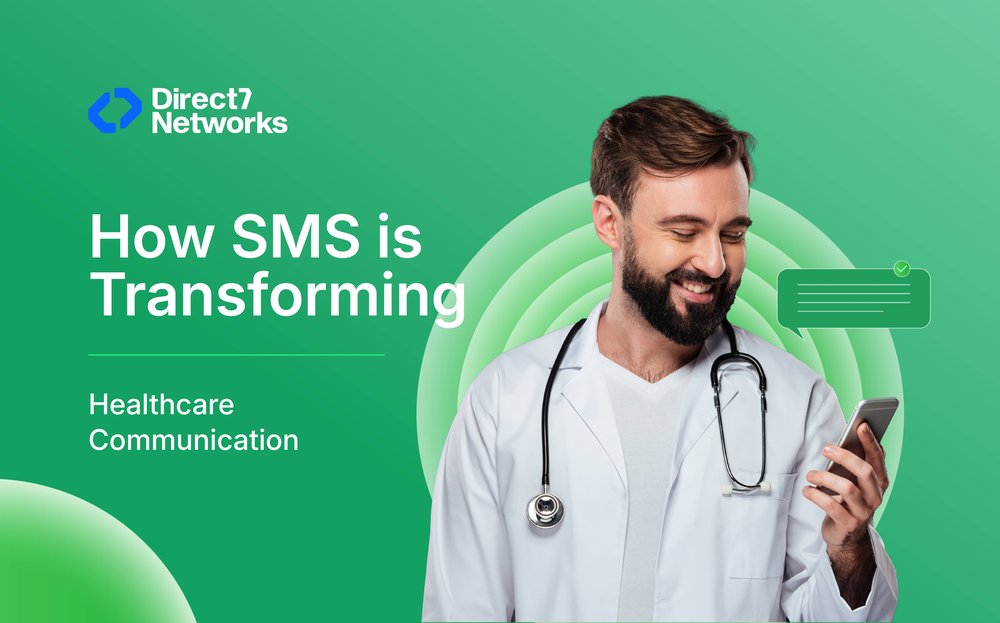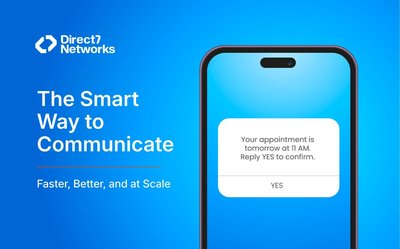SMS (Short Message Service) remains one of the simplest and most effective ways to reach patients quickly. It works on any mobile phone, requires no app installation, and is usually read within minutes. When implemented correctly, SMS reduces missed appointments, speeds up rescheduling, and keeps patients informed, without overloading phone lines.
This guide will cover:
- Where and how SMS fits into clinical operations
- How to design messages patients actually act on
- Privacy and consent considerations
- Integration with EHR (Electronic Health Records) and workflows
- Ready-to-use templates, rollout planning, and team checklists
Why SMS Matters in Healthcare
Key Benefits of SMS
- Fewer missed appointments and Faster Rescheduling
- Multiple studies report that text reminders increase attendance and reduce missed visits compared with no reminders.
- While effect size varies across populations, the direction remains consistent.
- Lower Operational Load
- Reduces the need for manual calls.
- Minimizes time wasted on unanswered voicemails.
- Leads to cleaner, more predictable schedules.
- Higher Patient Satisfaction
- Patients value quick confirmations and reminders that don’t require searching through emails or voicemail.
- In safety-net healthcare settings, satisfaction scores were high, with 77–96% of patients reporting positive feedback on SMS reminders (Source: ubiquityjournal).
- Better Reach Across Patient Populations
- SMS is effective for patients who rarely answer unknown calls or do not use email.
SMS supports both operational efficiency and patient engagement, making it a low-barrier, high-return tool in healthcare settings.
Where SMS Helps Most
Think of SMS along the appointment lifecycle and routine patient updates:
Scheduling and Confirmations
- Instant confirmation when a visit is booked.
- Self-service links for:
- Adding the appointment to calendars
- Directions and parking details
- Accessing language services
- Completing telehealth readiness checks
- Eligibility and preparation prompts, such as:
- Uploading insurance card photos
- Referral reminders
- Fasting instructions
- Lab preparation requirements
By embedding SMS into the earliest stage of the appointment lifecycle, providers minimize confusion, ensure patients are better prepared, and build trust through clear, timely communication.
Reminders and Attendance
Recommended Reminder Cadence
Design reminder timing that respects patients’ needs and clinic workflows.
- Typical Clinic Cadence:
- Immediate confirmation after booking
- Reminder 72 hours before the visit
- Reminder 24 hours before the visit
- Same-day reminder about 2 hours before the appointment
- Specialty Adjustments:
- Pediatric care and behavioral health may require different timing to accommodate families and caregivers.
Clear Action Options
Always provide simple, actionable responses within the SMS itself.
Example: "C" to confirm, "R" to reschedule, "Q" for questions
Persuasive Messaging
- Studies show that wording significantly affects patient behavior.
- Highlight the value of attending (e.g., continuity of care, avoiding delays).
- Mention potential costs of missing (e.g., health risks, rescheduling delays).
- (Reference: PLOS study on SMS wording effectiveness).
Effective reminder systems blend clear timing, simple response options, and persuasive language to increase attendance rates.
Rescheduling and Waitlists
Benefits of Two-Way Texting
- Avoids frustrating phone tag and speeds up rescheduling.
Automated Rules
- If patient replies R (reschedule):
- Automatically send the next three available slots.
- If none are acceptable, route the case to a live agent.
Filling Cancellations
- Maintain a segmented waitlist of patients who have asked for earlier appointments.
- When a slot opens, please let them know via SMS to fill it quickly.
Two-way SMS combined with automated rules keeps schedules full and minimizes staff workload.
Day-of-Visit Logistics
SMS helps smooth the patient’s experience on the day of care.
- Directions & Parking: Send a short message with a map link or parking instructions.
- Queue Management: Example: "Reply HERE when you arrive" to help clinics manage waiting rooms.
- Telehealth Checks: "Open this link 10 minutes before your visit to test audio/video" ensures technical readiness.
Timely logistical updates reduce confusion, lower staff interruptions, and improve patient flow.
Post-Visit Follow-Ups
Types of Follow-Ups
- Discharge Reminders: Reinforce instructions (e.g., wound care, red-flag symptoms).
- Medication and Refills: Short, discreet nudges to remind patients of adherence.
- Satisfaction Surveys: Begin with a single easy question such as:
“How was your visit today on a scale of 1–5?”
Public Health Best Practices
- According to the CDC, patient notifications should always be:
- Simple
- Direct
- Actionable
Post-visit messages maintain continuity of care, encourage adherence, and provide valuable patient feedback.
Preventive Care and Recalls
Use Cases for Preventive Messaging
- Screening Reminders: Cervical, breast, and colorectal cancer screenings.
- Vaccine Recalls: Timely prompts for flu shots, boosters, or childhood immunizations.
- Chronic Care Check-ins: Regular nudges for blood pressure, diabetes, asthma, and other long-term conditions.
Evidence: Health-services research strongly supports the use of reminders to prompt patients toward preventive scheduling (Sources: CDC, AHRQ).
Preventive care reminders keep populations healthier, reduce long-term costs, and improve compliance with clinical guidelines.
Compliance and Consent (US and UK Highlights)
A. HIPAA and Patient Texting (US)
- Permissible Use: You can text patients, but you must protect privacy and obtain consent first.
- PHI (Protected Health Information): Avoid sending sensitive details directly in SMS.
- Best Practice: If clinical detail is required, use secure links or patient portals.
- HHS Guidance:
- Supports the use of common messaging technologies when paired with appropriate risk warnings.
- Documentation of consent is essential.
- (Source: HHS.gov).
Note: HIPPA - Health Insurance Portability and Accountability Act in US
Checklist for HIPAA Compliance:
- Obtain and record patient consent.
- Exclude PHI in plain SMS.
- Provide secure links for sensitive details.
- Warn patients of risks when using SMS.
B. TCPA and 10DLC Rules (US)
- Consent Required: Application-to-person (A2P) messaging requires clear patient consent.
- Opt-Out Compliance: Patients must be able to easily opt out at any time.
- Healthcare Allowances: Certain healthcare-related messages may be exempt, but still must follow rules for opt-out and content limitations.
- Keywords to Support:
- STOP
- END
- CANCEL
- UNSUBSCRIBE
- HELP
- Industry Standards: CTIA guidance and 10DLC registration emphasize proper disclosures and opt-out handling (Source: 10dlc.org).
C. NHS and UK Guidance
- Endorsement: SMS is widely supported for appointment reminders and results notifications.
- Requirements:
- Collect and document patient consent.
- Keep message content context-appropriate and minimal.
- Make it easy for patients to change contact preferences.
- References: NHS Transformation Directorate, Digital Health and Care Wales.
Bottom Line
- Always obtain explicit consent before sending appointment or update texts.
- Keep SMS content minimal and appropriate for the context.
- Provide an easy opt-out option in every message thread.
Compliance ensures trust and protects both the provider and the patient. Without it, even well-intentioned SMS programs can create legal and reputational risks.
What to Put in the Message (and What to Leave Out)
When designing SMS messages for patients, include only what is necessary and safe. Maintain a professional, concise, and action-oriented tone.
A. What to Include
- Patient first name (if appropriate for context)
- Date and time of appointment
- Clinic or department name
- Location or link to map/parking information
- Action prompt such as confirm, reschedule, or ask a question
- Preparation notes when necessary (e.g., fasting, arrive early, bring medication list)
Opt-out instruction such as: "Reply STOP to opt out"
B. What to Avoid in Plain SMS
- Sensitive details such as diagnoses, lab values, or specialties (behavioral health, reproductive health, etc.)
- Full date of birth or other unique identifiers
- Unmask links (use branded domains or official shortened links instead of random shorteners)
The safest strategy is to send only appointment essentials in SMS, while directing sensitive content through secure patient portals.
Ten Message Templates You Can Adapt
These templates are starting points. Localize them for tone, language, and clinic policies. Always validate final versions with your privacy and compliance officer.
| Scenario | Template Example | |
|---|---|---|
| New Appointment Confirmation | “Hi {FirstName}, your appointment with {Clinic} is set for {Date} at {Time}. {Address/Link}. Reply C to confirm, R to reschedule, or Q for questions. Reply STOP to opt out.” | |
| 72-Hour Reminder + Prep | “Reminder: {Clinic} {Date} {Time}. Please arrive 10 min early. Bring photo ID and meds list. Parking info: {short link}. C to confirm, R to reschedule.” | |
| 24-Hour Reminder | “See you tomorrow at {Time} for your {Clinic} visit. Questions? Reply Q. Need to reschedule? Reply R.” | |
| Same-Day Reminder | “Today {Time}: {Clinic}. Reply HERE when you arrive so we can check you in.” | |
| Telehealth Readiness | “Your video visit starts at {Time}. Test your device now: {secure link}. For help, reply HELP.” | |
| Reschedule Offer | “A slot opened {Date} at {Time}. Reply YES to take it, NO to keep your current time.” | |
| Missed Visit Follow-Up | “We missed you today at {Clinic}. To reschedule, reply R or call {Phone}. If you’re OK, reply OK.” | |
| Post-Visit Check-In | “Checking in after your visit with {Clinician}. Any concerns? Reply Q. To view your summary or instructions, use your portal: {link}.” | |
| Medication Reminder (Generic) | “Reminder to take your {Medication} as prescribed. Questions or side effects? Reply NURSE for a callback.” | |
| Preventive Screening Recall | “It’s time to schedule your {Screening}. Reply BOOK for appointment options or STOP to opt out.” |
Compliance Note: For sensitive services (e.g., behavioral health, reproductive health), always send neutral reminders with a secure portal link rather than including clinical details in the SMS itself.
Templates provide a scalable way to launch patient messaging quickly, but customization and compliance checks are critical before rollout.
What Kind of Results to Expect
SMS programs in healthcare have consistently shown measurable benefits, though the exact size of the effect depends on patient demographics, clinic type, and implementation quality.
Evidence-Based Outcomes
- Improved Attendance
- Meta-analyses and randomized trials confirm that SMS reminders increase attendance compared to no reminders.
- The magnitude varies but the direction of effect is consistently positive.
- (Source: PMC, NCBI).
- Impact of Message Tone
- Wording that emphasizes the importance of attending or the cost of missing visits can further improve attendance.
- (Source: PLOS).
- High Patient Satisfaction
- Patients report appreciating the clarity, convenience, and low effort of text reminders.
- Satisfaction levels in studies are strong and consistent.
- (Source: ubiquityjournal).
SMS is not just effective but also well-received, making it a sustainable channel for long-term patient engagement.
Two-Way Flows That Save Staff Time
Two-way SMS workflows automate routine tasks and reduce staff burden.
A. Rescheduling Without a Call
Workflow:
- Patient replies R to reschedule.
- System sends three available appointment slots.
- Patient selects one.
- System books the slot automatically.
- Confirmation SMS is sent.
B. Arrival and Queue Management
Workflow:
- Patient texts HERE on arrival.
- The system marks status as “arrived.”
- Automated response: “We’ll call your name soon.”
Result: Reduces crowded waiting rooms and improves patient flow.
C. Transportation Delays
Workflow:
- Patient replies LATE.
- Automated reply: “No problem, we’ll hold your spot for 15 minutes. Reply to R if you prefer to rebook.”
D. Waitlist Backfill
Workflow:
- System texts the first 10 eligible patients.
- The first to reply YES is booked.
- The offer is closed for the others.
E. Care Navigation
Workflow:
- Patient sends keyword Q.
- Message routes to the staff inbox or callback queue.
- Conversation context attaches to the patient’s chart for continuity.
Automating common tasks through two-way flows saves staff time, reduces phone traffic, and improves responsiveness.
Operational Design: Getting the Details Right
Success with SMS programs depends not just on the technology, but also on careful design choices.
A. Timing and Frequency
- Regulatory Limits: In the US, healthcare exemptions still restrict excessive cadence. (Source: Holland & Hart).
- Best Practices:
- Avoid sending messages in the middle of the night.
Do not overwhelm patients with multiple unnecessary reminders.
B. Language and Accessibility
- Multilingual Support: Offer reminders in multiple languages based on patient population.
- Clarity:
- Keep sentences short.
- Avoid jargon.
- Accessibility:
- For older adults or patients with low vision, avoid dense links.
- Provide simple, step-by-step instructions.
- Research shows SMS reminders are effective across age groups when kept simple. (Source: NCBI).
C. Identity and Trust
- Recognizable Sender: Use a sender name or registered number patients can trust.
- Consistency: Maintain a consistent message style across all communications.
- Branded Links: Always use branded or official short domains for URLs to build trust.
Operational details—such as cadence, clarity, and trust—determine whether patients view SMS as helpful or intrusive.
Data Protection and Security
Patient trust and compliance depend on secure, responsible use of SMS.
A. Protecting PHI (Protected Health Information)
- Minimize PHI in SMS: Keep clinical details out of the text body.
- Secure Portal Links: Place sensitive information behind authenticated patient portals or secure links.
B. Documenting Consent
- Record who consented, how (written, electronic, or recorded verbal), when, and the scope of consent.
- Example scopes: appointment reminders, updates, and preventive recalls.
C. Honor Opt-Out Immediately
- Support standard keywords (STOP, END, CANCEL, UNSUBSCRIBE).
- Suppress all future sends until the patient explicitly opts in again.
- Required under CTIA/10DLC and TCPA frameworks (Source: 10dlc.org).
D. Data Retention
- SMS content and metadata count as part of the medical record if they inform care.
- Follow institutional record retention policies for compliance.
Security-first design reduces legal risks and strengthens patient trust.
Integration with Your EHR and Systems
Successful SMS workflows require smooth integration with existing scheduling and health record systems.
A. Data You’ll Need
- Patient contact numbers
- Language preference
- Consent status
- Appointment type and location
- Preparation requirements
- Provider schedules and slots (for reschedule offers)
Flags for sensitive departments (to keep SMS content neutral)
B. System Interfaces
Outbound Flow:
- Scheduling system posts events to the messaging API (e.g., new appointment, change, cancellation).
Inbound Flow:
- A webhook endpoint receives replies (C, R, Q, HERE, STOP).
- The endpoint writes responses back into the scheduling/EHR system.
- Event pipelines:
- Must acknowledge quickly to avoid timeouts.
- Should process asynchronously in the background.
- Must be idempotent (providers may retry webhooks multiple times).
(Source: NHS Transformation Directorate)
C. FHIR/HL7 Touchpoints
- Modern Stacks: Use FHIR (Fast Healthcare Interoperability Resources) such as Appointment, Patient, and Communication to maintain clean audit trails
- Legacy Systems: Rely on HL7 ADT/SIU feeds or scheduling export
Proper integration ensures automation works reliably without disrupting clinical operations.
Measuring Success
Monitor SMS performance continuously at the clinic, provider, and appointment-type levels.
Key Metrics to Track
- No-show rate: Compare baseline vs. post-SMS implementation.
- Confirmation and reschedule rates: Measure directly from SMS responses.
- Lead time: Average time between reminder sent and patient response.
- Same-day cancellations: Fewer is better.
- Waitlist fill time: How quickly cancellations are backfilled.
- Opt-out rates: Track by message type and wording.
- Patient satisfaction: Collect through short post-visit SMS micro-surveys.
Proactive Monitoring
- Alert your team if delivery or confirmation rates suddenly drop in a region.
- Possible causes: carrier filtering, message content issues, or infrastructure failures.
Defining and tracking clear metrics ensures your SMS program delivers measurable improvements in efficiency, satisfaction, and clinical outcomes.
Rollout Plan (4 Weeks)
Launching an SMS program works best when rolled out in phases. The following 4-week plan balances design, integration, testing, and expansion.
Week 1 – Design & Approvals
- Map Flows: Define reminders and reply options (C, R, Q, HERE, STOP).
- Write Templates: Draft message templates and submit them for privacy/compliance approval.
- Define Consent Capture: Establish points where consent will be collected, such as:
- Online registration forms
- Front desk check-ins
- IVR (Interactive Voice Response) systems
Goal: Establish a compliant foundation with approved messaging and clear consent capture.
Week 2 – Integrate & Test
- System Integration: Connect scheduling events to your messaging API.
- Webhook Setup: Build a receiver for patient replies and delivery status updates.
- Pilot Testing: Run controlled tests with staff and a small patient group to validate workflows.
Goal: Ensure technical reliability before exposing the system to a larger patient base.
Week 3 – Pilot
- Limited Launch: Start with one clinic or specialty service.
- Daily Tracking: Monitor no-shows, confirmations, and opt-outs in real time.
- Iterative Improvements: Experiment with timing and language. Example:
- A/B test 72-hour vs 48-hour reminders.
- Refine message tone for clarity and response rate.
Goal: Collect actionable data to optimize message design and cadence.
Week 4 – Expand
- Scale Up: Extend SMS to additional departments and preventive recall campaigns.
- Localization: Adapt templates for different languages and patient populations.
- Update Consent Language: Ensure patient-facing consent materials remain clear and accessible.
Goal: Move from pilot to organization-wide adoption while maintaining compliance and patient trust.
Common Pitfalls (and How to Avoid Them)
1. Overstuffed Messages
- Problem: Trying to cram too much information into one SMS.
- Why It’s a Problem: Patients ignore long or complex texts. Cluttered messages reduce clarity and action rates.
- How to Avoid: Keep it short. Focus on one action per text.
2. Clinical Detail in Plain Text
- Problem: Including diagnoses, lab values, or sensitive health details in SMS.
- Why It’s a Problem: Risks patient privacy violations and HIPAA non-compliance.
- How to Avoid: Use secure links or patient portals for sensitive content. Keep SMS neutral (Source: HHS.gov).
3. No Easy Opt-Out
- Problem: Failing to provide a clear opt-out mechanism.
- Why It’s a Problem: Violates 10DLC/TCPA frameworks and frustrates patients.
- How to Avoid: Always include an opt-out path (e.g., "Reply STOP to opt out") and honor immediately (Source: 10dlc.org).
4. Night-Time Sends
- Problem: Sending reminders during overnight hours.
- Why It’s a Problem: Patients may feel annoyed or intruded upon.
- How to Avoid: Respect quiet hours and local time zones.
5. Unclear Sender Identity
- Problem: Patients receive texts from unknown numbers.
- Why It’s a Problem: Leads to confusion or ignored messages.
- How to Avoid: Use a consistent sender ID or registered number patients recognize.
6. One-Way Only Messaging
- Problem: Patients cannot reply directly to reschedule or ask questions.
- Why It’s a Problem: Staff phones get overloaded with calls.
- How to Avoid: Enable two-way messaging for confirmations, reschedules, and FAQs.
7. No Consent Record
- Problem: Consent not documented properly.
- Why It’s a Problem: In the US, consent handling is tied directly to TCPA/10DLC compliance. Lack of records risks violations.
- How to Avoid: Maintain up-to-date consent logs: who, how, when, and scope (Source: Federal Register).
Most pitfalls stem from over-complication, lack of compliance, or poor user experience. Clear, simple, consent-based messaging avoids these issues.
Conclusion: SMS as a Strategic Healthcare Tool
SMS has emerged as one of the simplest yet most powerful tools for improving healthcare operations and patient experience. When designed carefully, it:
- Reduces no-shows and speeds up rescheduling
- Relieves staff workload by automating routine tasks
- Increases patient satisfaction through clear, timely updates
- Reaches patients who ignore calls or emails
- Strengthens preventive care efforts with recalls and reminders
At the same time, SMS requires careful handling of privacy, consent, and compliance. Following HIPAA, TCPA/10DLC, CTIA, and NHS guidelines ensures messages remain safe, trustworthy, and legally compliant.
Key Takeaways
- Keep it simple: One action per message.
- Protect privacy: No PHI in plain texts; use secure links.
- Respect patients: Time messages thoughtfully, support multiple languages, and allow opt-outs.
- Measure impact: Track attendance, opt-outs, satisfaction, and waitlist fills.
- Scale responsibly: Start small, validate results, and expand step by step.
Bottom Line: Done right, SMS is not just a reminder tool—it is a strategic channel for patient engagement, operational efficiency, and better health outcomes.





